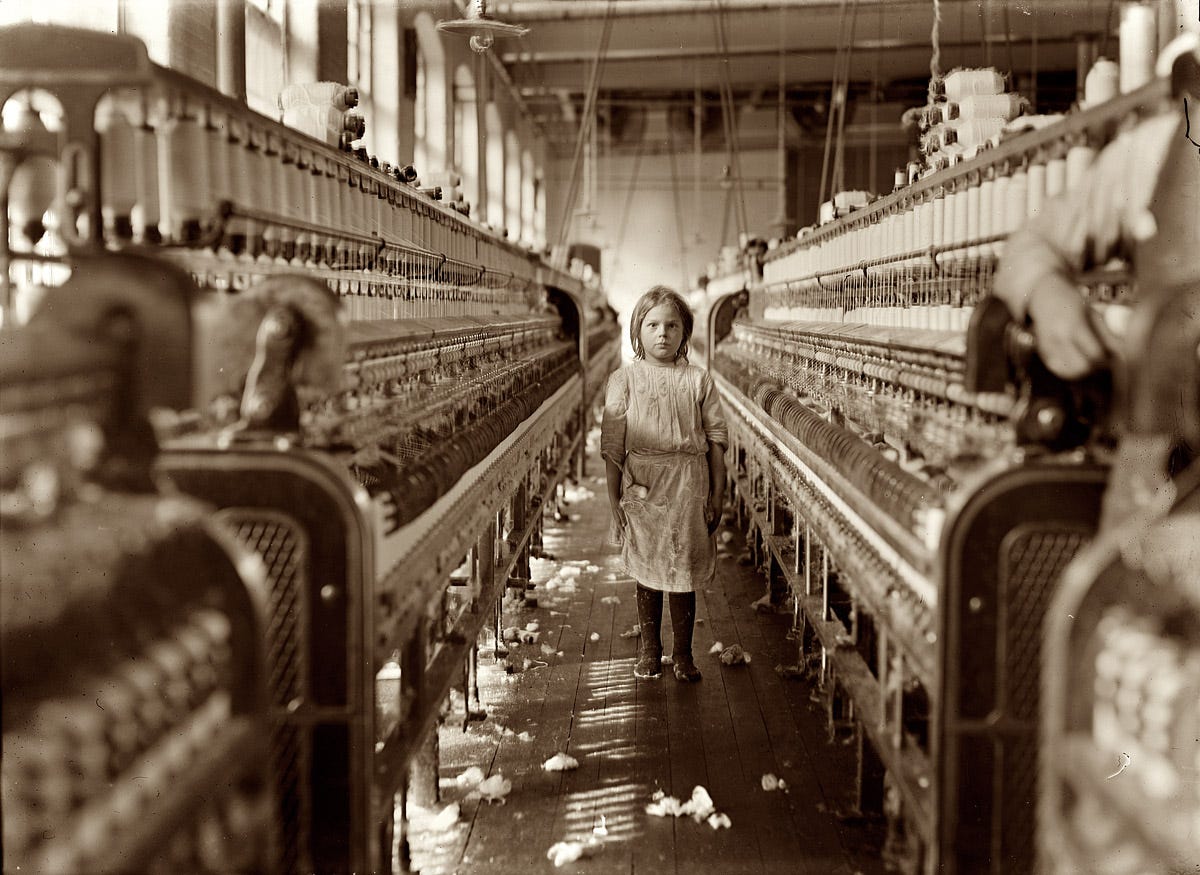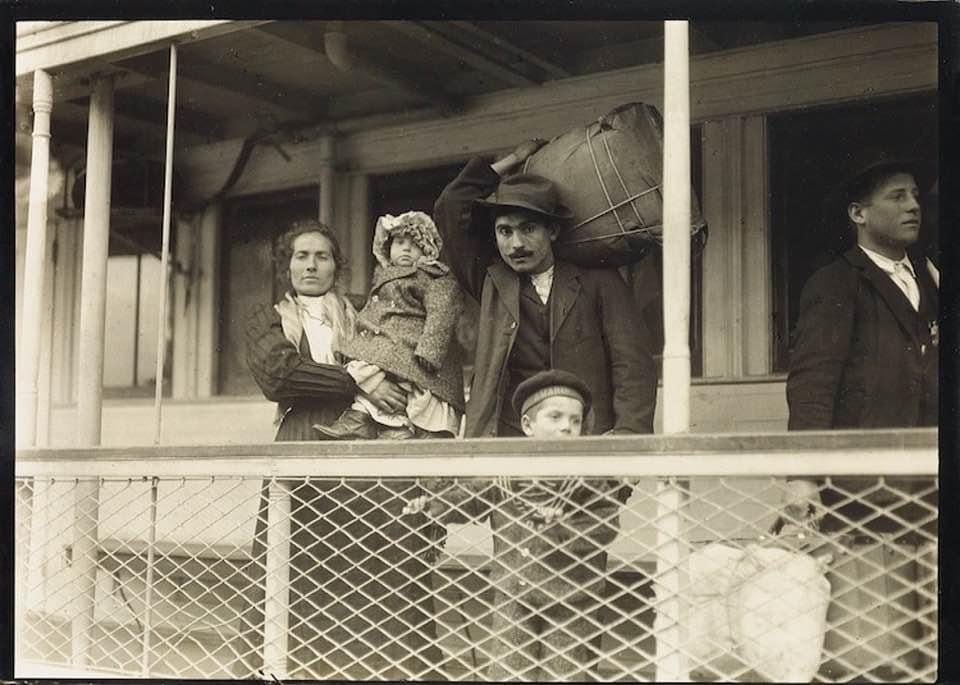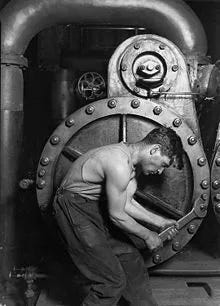“OSHKOSH GENIUS: Lewis Hine’s photographs profoundly shaped American history,” By Stephen Heins
“His work as a documentary photographer focused on marginalized groups—child laborers, immigrants, and industrial workers—providing a visual record that spurred activism and policy change.”
Lewis Hine’s photographs profoundly shaped American history in the first four decades of the 20th century by exposing social injustices, influencing labor reforms, and shaping public perception of industrialization’s human life. His work as a documentary photographer focused on marginalized groups—child laborers, immigrants, and industrial workers—providing a visual record that spurred activism and policy change.
Key Impacts of Hine’s Photography
1. Child Labor Reform (1900s–1920s)
Hine’s most significant contribution was his work with the National Child Labor Committee (NCLC) starting in 1908. His photographs of children working in dangerous conditions—factories, mines, textile mills, and street trades—revealed the brutal realities of child labor. Images like those of young mill workers or breaker boys in coal mines captured the physical toll and stolen childhoods, making abstract statistics visceral.• Influence: Hine’s photos were widely distributed in pamphlets, magazines, and exhibitions, galvanizing public support for labor laws. They helped push states to enact child labor regulations and contributed to the eventual passage of the Fair Labor Standards Act of 1938, which set federal standards for child employment.
• Example: His 1908 photograph of a young girl in a South Carolina textile mill, dwarfed by machinery, became an iconic symbol of exploitation, swaying middle-class audiences to demand reform.
2. Immigrant Life and Empathy (1900s–1910s)
Hine’s work at Ellis Island (1904–1909) documented the experiences of immigrants arriving in America. His portraits of families, often in moments of hope or exhaustion, humanized the immigrant struggle at a time of widespread xenophobia.• Influence: By showing immigrants as individuals with dignity, Hine countered nativist stereotypes. His images were used in progressive publications to advocate for better treatment and integration of newcomers, subtly shifting public attitudes.
• Example: His 1905 photograph of an Italian family at Ellis Island, weary yet hopeful, highlighted the universal aspirations of immigrants, fostering empathy among viewers.
3. Industrialization and Worker Conditions (1910s–1930s)
Hine’s photographs of industrial workers, particularly during the construction of the Empire State Building (1930–1931), celebrated human labor while exposing its risks. His images of men perched on steel beams, eating lunch mid-air, captured both the heroism and precariousness of industrial work.• Influence: These photos humanized the labor behind America’s industrial boom, reinforcing the need for workplace safety regulations. They also became cultural touchstones, symbolizing American ambition during the Great Depression.
• Example: The 1931 “Lunch Atop a Skyscraper” (often attributed to Hine, though authorship is debated) became an enduring image of resilience, widely reproduced in media.
4. Progressive Era Advocacy and Visual Journalism (1900s–1920s)
Hine’s work epitomized the Progressive Era’s use of photography as a tool for social reform. His images were not just art but evidence, meticulously captioned to provide context and spur action. He pioneered “social photography,” blending aesthetics with advocacy.• Influence: Hine’s approach inspired future documentary photographers and established photography as a legitimate tool for journalism and reform. His work with magazines like The Surveyamplified progressive causes, from housing reform to workplace safety.
• Example: His 1910s Pittsburgh Survey photographs exposed slum conditions, influencing urban reform movements.
Broader Historical Context
Hine’s photographs emerged during a period of rapid industrialization, urbanization, and social upheaval. The early 20th century saw stark wealth disparities, unchecked corporate power, and weak labor protections. His images bridged the gap between middle-class reformers and the working poor, making distant suffering immediate and undeniable. By the 1930s, his work laid the groundwork for New Deal-era photography projects, like the Farm Security Administration’s documentation of the Great Depression.
Limitations and Challenges
• Resistance: Employers and industries opposed Hine’s work, often barring him from worksites or threatening legal action. He sometimes posed as a machinery inspector to gain access.
• Reach: While influential among reformers, his photos didn’t always reach the working-class communities they depicted, limiting direct empowerment.
• Attribution: Some of Hine’s later work, like the Empire State Building series, faced disputed credit for some of the photos, diluting his recognition. Although, Hine’s “Icarus” remains his most famous photograph.
Conclusion
Lewis Hine’s photographs were a catalyst for change in early 20th-century America, exposing the human cost of industrialization and galvanizing reforms in child labor, workplace safety, and immigrant rights. His ability to combine artistry with advocacy made his images powerful tools for social justice, leaving a lasting legacy in American visual culture and labor history. By giving a face to the marginalized and average American, Hine not only documented history but helped shape it. As biographer Timothy J. Duerden put it, Lewis Hine was a “virtuous and noble American.”








Unfortunately, powerful photographs of the severe dislocations engendered more recently by neo-liberalism, war, and migration have not had the same effect as Hine’s and others did 100 years ago. Have we become inured to the medium or is our society just more callous? Yet, one must not give up hope. Thanks for the post.